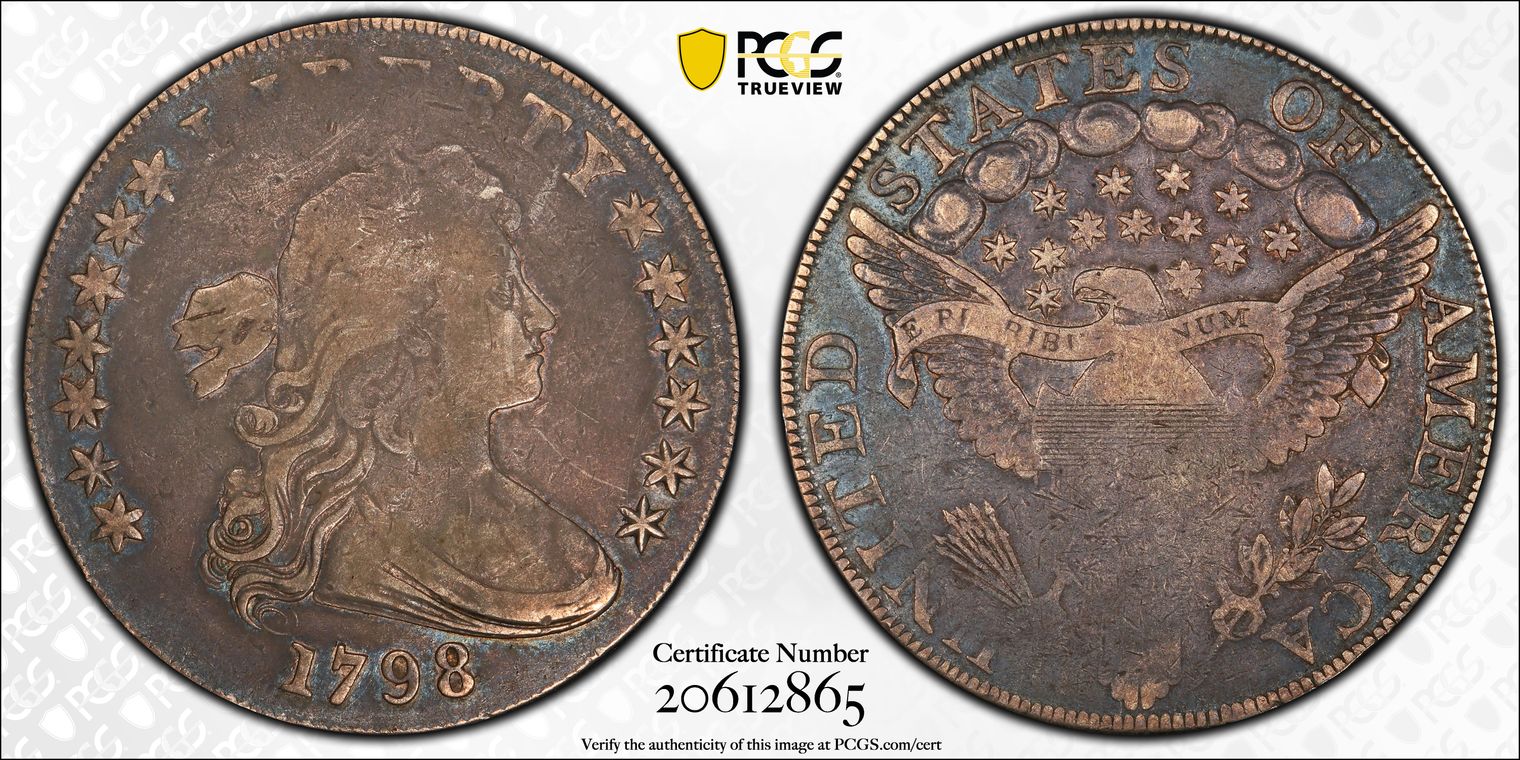1798 $1 BB-126 VG10 认证号20612865, PCGS号541930
拥有者评论
专家评论
Ron Guth
This new variety was discovered in early 2015 by Scott Mitchell of Garden City, NY, submitted to PCGS, and confirmed by W. David Perkins:
“Based on studying the photo...attached, I agree that we have a new die marriage, a combination of a previously known obverse and a previously known reverse die. This new marriage mates the obverse die used for 1798 B-13, BB-108 and 1798 B-10, BB-109 with the reverse used for 1798 B-18, BB-103 and B-22, BB-104. I also agree that this new die marriage should be called 1798 B-34, BB-126.
It is somewhat important to note that the strike on the reverse of this new 1798 B-34, BB-126 die marriage is very similar to the strike on the 1798 B-18, BB-103 marriage. The plate coin on page 285 of the original (1993) edition of the Bowers-Borckardt silver dollar encyclopedia illustrates this. The coin illustrated on page 283 in the book for the B-18, BB-103 die marriage is the Jules Reiver Specimen (and is now in my collection, sold to me privately after Jules passed away, and was not included in the Heritage Reiver Sale in January 2006). You can see the similarities in the striking on the eagle and shield on the reverse, and the central and upper portrait of Liberty on the obverse. There are only six specimens of the extremely rare B-18, BB-103 die marriage known to me, with the Reiver-Perkins Specimen mentioned being the finest known (graded PCGS F-15). All six are in lower grades, and all six have a similar strike and look.
For those interested, Harry E. Salyards, M.D. appears to have been somewhat prescient, as quoted in the first edition of the Bowers-Borckardt book for the 1798 B-10, BB-109 die marriage [see first paragraph, on page 295]:
Note: As the obverse [for 1798 B10, BB-109} was used later to coin more 1798 BB-18s, one wonders what happened to this reverse die. Why was its use interrupted? Perhaps, somewhere “out there” is a BB-109 exhibiting a sudden, massive reverse die failure.
Although we don’t have a new die state (or stage) showing massive die failure for 1798 B-10, BB-109 die marriage, as Salyards anticipated, we now know that this reverse die was used at least one other time, in striking the new 1798 B-24, BB-126 die marriage."




















